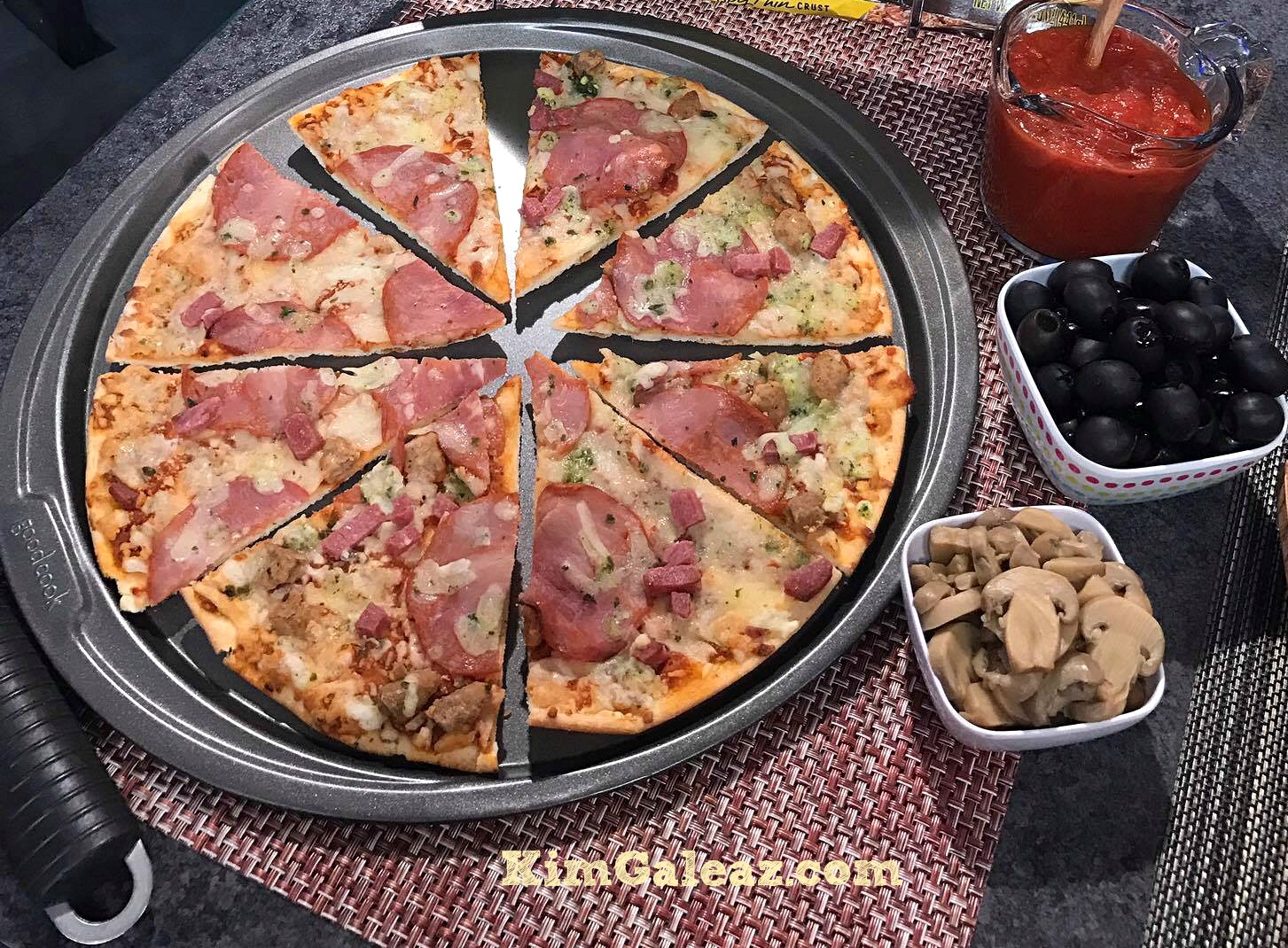
![]() Here’s why I’d like you to stop calling pizza “junk food.”
Here’s why I’d like you to stop calling pizza “junk food.”
1. Pizza typically provides at least three of the five nutrient-rich food groups.
Surprise! Pizza indeed has nutritional value.
Take a basic, kid-favorite cheese pizza. It contains cheese (dairy), tomato sauce (vegetable) and crust (grains.) Make a Hawaiian Pizza by adding ham (protein) and pineapple (fruit) and now you’ve got all five nutrient-rich food groups!
This hardly qualifies as “junk food.” Which by the way, is a term I detest and refuse to use for any food or beverage. As a registered dietitian nutritionist, I like to teach a different concept about foods overall, instead of classing them as good/bad/junk. That concept? Foods either provide a good source of nutrients – like all the foods in the 5 nutrient-rich food groups – or they don’t. This would include fun treat foods that make us happy, like candy, decadent desserts and cocktails. Instead of saying they’re “junk,” let’s all just say they’re not a valuable source of essential nutrients. But they sure do provide enjoyment!
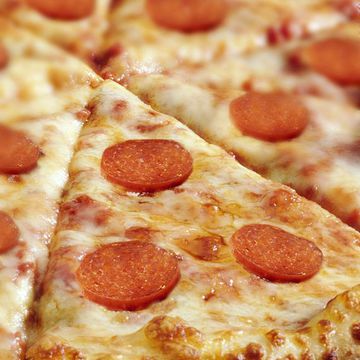 2. Just because pizza can be high-calorie and high-fat doesn’t make it “junk.”
2. Just because pizza can be high-calorie and high-fat doesn’t make it “junk.”
It just makes it a high calorie, high fat food that you and I need to enjoy responsibly.
Let’s assume you’re out at a restaurant ordering pizza or at home making one yourself. You get to decide what’s on your pizza. Which basically means you get to control the amount of calories and fat grams that end up on that pizza.
Double cheese your thing? That’s fine. Just know cheese provides important muscle and bone-building nutrients, like calcium and protein. Also know you’re doubling the fat and calories.
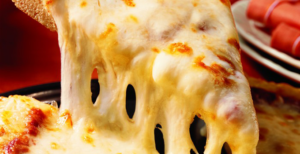
Photo courtesy Indiana Dairy Farmers WinnersDrinkMilk.com
And while you’re enjoying that double-cheese pizza, pause and thank Indiana Dairy Farmers for their hard work and efforts in producing ample milk so cheese-makers can make delicious, smooth and creamy cheese for your pizza.
Want to add sausage, pepperoni, bacon or ground beef to that pizza? Or all four for the Meat Lovers special?! Again that’s fine and your choice. Just know calories and fat increase with every topping added to a standard cheese pizza. Chicken strips, ham, Canadian bacon and shrimp are lower calorie/fat options, by the way, compared to sausage, pepperoni, bacon and ground beef chuck. All meat choices, however, provide essential protein for optimal bone and muscle health.
No matter what your favorite protein topping is, pause during one big bite and thank our Indiana pork, beef and poultry farmers. They work long hours and are dedicated to raising safe and healthy animals so you have safe and nutritious topping choices for your pizza.
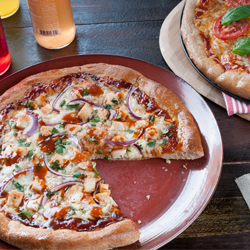
Photo courtesy WheatFoods.org
3. Just because you eat too much pizza sometime/often/all the time doesn’t make it a “junk food.”
It just makes it a food you have a hard time eating moderately or responsibly.
Just like you get to decide what goes ON your pizza, you also get to decide HOW OFTEN you’ll have pizza and HOW MUCH you’ll eat. I personally like to enjoy pizza every 6 to 8 weeks, and when I have it, I plan for it and eat lots of it. I like double-cheese with LOTS of mushrooms and black olives, by the way. And extra tomato sauce, because I want those health-boosting tomato phytonutrients that promote a healthy heart, skin, brain and body.
Indiana is a big tomato-producing state, by the way. So thank our Indiana Tomato Farmers while you’re pouring pizza sauce on your homemade pizza. Or dipping breadsticks in marinara sauce at your favorite restaurant.
Breadsticks remind me of pizza crust, so I want to mention that either white refined or whole wheat is fine. The Dietary Guidelines suggest choosing at least half – not all – of your grains daily from the whole category. Both provide essential brain-power carbohydrates and nutrients. So it’s okay to enjoy white bread, white pizza crust, white bagels as long as you also choose some whole grains. A big thanks to all our wheat farmers whose hard work and dedication result in us having unlimited grain food choices.
Other toppings that add great flavor with minimal or very reasonable calories – and that contribute to your daily fruit and vegetable requirement – include onions, bell peppers, broccoli, artichokes, arugula, potatoes, spinach, Swiss chard/all leafy greens, zucchini, winter squash like butternut and acorn, sauerkraut, sundried tomatoes, corn, black or pinto beans, and fruit slices like peach, pear and apple.
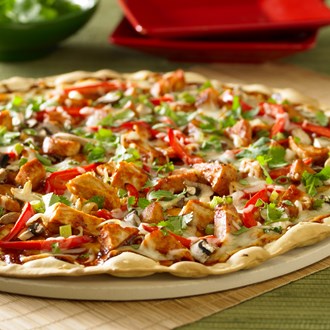
Photo courtesy ForkMorePork.org
4. Life is too short NOT to have a positive relationship with food, including pizza.
Think about it.
Do you want to spend your life agonizing over every little food item and ingredient? Do you want to class foods as “good” or “bad/junk” which does nothing but set you up for huge feelings of guilt, anxiety and shame? Do you really want to spend so much time with negative food thoughts?
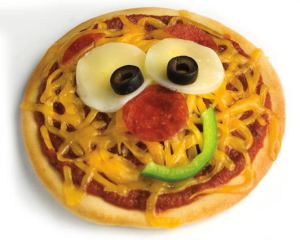
Photo courtesy Indiana Dairy Farmers & WinnersDrinkMilk.com
How about a positive, happy relationship with food? A relationship where realistically and individually, all foods and beverages can be part of any eating plan. It’s up to you to decide how much and how often. A positive relationship that acknowledges that foods just simply have different levels of nutrient value.
And especially a positive relationship that celebrates food and savors every bite of it.
Including big slices of thick crust, double cheese, meat-lovers pizza!
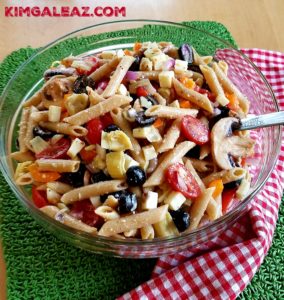
Very Veggie Pizza Pasta Salad
Or for something a little different, enjoy a big serving of my
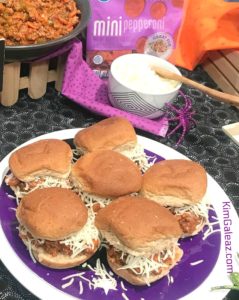
Pizza Sloppy Joes
Pepperoni Pizza Sloppy Joes, Pizza Hummus or Very Veggie Pizza Pasta Salad.
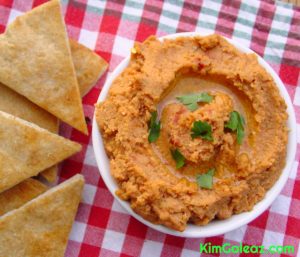
Pizza Hummus
Disclosure: As a proud supporter of Indiana Agriculture and Farmers, I’m happy to say this is a sponsored post for The Glass Barn, brought to you by Indiana Soybean Checkoff dollars. All content is created solely by me and all opinions are mine. The Glass Barn is a physical and online resource providing educational materials on Indiana farming to educators and students. You can visit the Glass Barn at the Indiana State Fairgrounds.